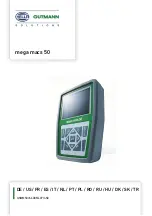
12
00 0290 395 0 - RHB C 490-C 370 - 03/09
1 Introduction
General repair instructions
44966
Never use force for arresting the gib head key in order
to avoid damage to the components (especially the
brake discs) and to enable loosening with the CLAAS
special tool.
14029
Self-locking bolts with micro-encapsulated
adhesive
Replace self-locking bolts, e.g. Verbus-Plus / Imbus-
Plus upon each assembly. In exceptional cases, they
may be reused up to three times.
Always tighten self-locking bolts with microencapsu-
lated adhesive rapidly to the specified tightening
torque.
Always observe the specified tightening torque.
When removing self-locking bolts, quickly unscrew
them completely. Self-locking bolts must never get in
contact with sealing compound.
Self-locking bolts with microencapsulated adhesive
may be used only where operating temperatures will
not exceed
+ 90 °C
max.
These bolts can be subjected to full stress after
24 hours at
+ 20 °C
. The complete curing period can
be shortened by heating, e.g. to 15 minutes at
+ 70 °C
.
In individual cases, bolts with liquid locking compound
can be used instead of self-locking bolts only where
these bolts can be heated up to approx.
200 °C
for
removing them. Comply with the specified quality
grade of bolts, e.g. 8.8 or 10.9 here as well.
14031
Liquid locking compound
Use liquid locking compound only where specified
by the manufacturer.
Correct application:
Metal surfaces where liquid locking compound is to
be applied must be absolutely free from grease.
Use the "Activator" included in the workshop package
for cleaning.
Before applying the liquid locking compound, the acti-
vator, i.e. the cleaning agent on the metal surfaces
must have dried. Especially in blind holes, no activator
residues are allowed.
Caution!
Damage to the gib head key joint.
– Arrest the gib head key with a suitable
hammer that is not too heavy and with the
right touch.







































